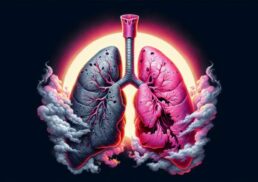Did you know that burn out is more than just feeling tired or stressed? It’s a unique phenomenon that affects millions of people, with lasting consequences for their physical and mental health. In this blog post, we’ll delve deep into the world of burn out, helping you recognize its signs, understand its causes, and learn effective strategies for overcoming and preventing this debilitating condition. Are you ready to regain control of your life and well-being? Let’s get started!
Table of Contents
Key Takeaways
Burnout is a psychological reaction to prolonged or chronic job stress with potential impacts on every aspect of life.
Recognizing burnout symptoms such as exhaustion, depersonalization and decreased personal accomplishment early is critical for maintaining a healthy work-life balance.
Establishing boundaries, prioritizing self care and seeking support from others are essential strategies for overcoming burnout and promoting long term well being.
Understanding Burnout: Definition and Causes

Burnout is a psychological reaction to prolonged or chronic job stress, typically featuring feelings of exhaustion, cynicism, and diminished professional capacity, often referred to as job burnout. While it may be triggered by an individual’s job, anyone experiencing an excess of work, too many responsibilities, and a lack of appreciation is at risk of mental exhaustion.
Burnout not only leads to decreased productivity and lack of energy, but also impacts every aspect of life, such as home, work, and social life. Promptly identifying the stages of burnout can help individuals regain control in situations where they feel overwhelmed by their work or personal life.
Chronic Workplace Stress
Chronic workplace stress, a form of chronic stress, is a prolonged and persistent stress encountered in the work setting, resulting in physical and emotional fatigue, reduced job satisfaction, and adverse health consequences. Common causes of chronic workplace stress include:
long hours
heavy workloads
job insecurity
conflicts with colleagues or supervisors
These factors can lead to an imbalance between work and life.
It is necessary to address and manage chronic workplace stress to sidestep burnout and maintain overall well-being.
Personal Factors
Potential contributing factors to burnout include:
- Personality traits
- Family life
- High neuroticism
- Introversion
- Extreme conscientiousness
- Lack of sleep
- Lack of hobbies and social activities
These factors can have a significant impact on an individual’s physical and emotional health, as well as their physical and mental health, which is why consulting a mental health professional is essential.
Emotional exhaustion, one of the primary indicators of burnout, can be exacerbated by these personality traits. Family life can also contribute to burnout by increasing stress levels and placing additional demands on an individual’s time and energy. Insufficient sleep and absence of recreational and social activities can further lead to burnout.
Recognizing Burnout: Symptoms and Warning Signs

Physical Symptoms
Burnout symptoms can manifest as physical, emotional, and behavioral signs, which can worsen over time if not addressed. The three primary indicators of burnout are exhaustion, depersonalization, and a decrease in personal accomplishment. Major symptoms include fatigue, apathy or dissatisfaction with work, headaches, and changes in diet or sleep patterns. Early identification of these symptoms and warning signs allows individuals to take proactive steps towards managing their stress and preserving a healthy work-life balance.
Physical symptoms of burnout include fatigue, aches, and changes in appetite. Exhaustion in the context of burnout is a consistent state of physical and mental exhaustion that impacts both mental and physical energy.
Furthermore, burnout can be accompanied by feeling exhausted and drained, physical fatigue, difficulty sleeping, headaches, lowered immunity, and stomach pain or digestive issues.
Learn more, visit Here’s how to deal with feeling physically and emotionally tired
Emotional Symptoms
Emotional symptoms of burnout involve feelings of cynicism, detachment, and reduced personal accomplishment. Reduced personal accomplishment may be evidenced by a lack of enjoyment in work, decreased creativity, and difficulty concentrating.
Depersonalization, in relation to burnout, is characterized by a sense of detachment, apathy, and difficulty connecting with others.
Behavioral Symptoms
Behavioral symptoms of burnout include:
Withdrawal
Irritability
Decline in work productivity
Avoidance of social activities
Procrastination
Disregard for responsibilities
Decreased motivation and productivity
Difficulty concentrating and making decisions
Changes in sleep patterns
Increased use of substances
Neglecting personal needs and self-care
Burnout vs. Stress and Depression

Burnout differs from stress and depression in its specific triggers, symptoms, and potential for resolution. While stress is characterized by excessive pressure, burnout involves feeling empty and mentally exhausted.
Moreover, depression affects all aspects of life, while burnout is primarily work related.
Stress Comparison
Stress is a transient psychological or emotional strain, while burnout is a more serious and prolonged outcome of unchecked stress. Stress may manifest as anxiety, irritability, and restlessness, while burnout can be characterized by apathy, hopelessness, and detachment.
Stress can be addressed with short-term solutions, while burnout necessitates long-term lifestyle changes.
Depression Comparison
Depression is a mental health disorder that affects all aspects of life and is not limited to work. It is characterized by:
Continuing feelings of sadness
Loss of interest or pleasure
Changes in appetite and sleep patterns
Difficulty focusing
Burnout, on the other hand, is commonly linked with work-related stress and is characterized by feelings of exhaustion, cynicism, and decreased professional effectiveness. While burnout can lead to depressive symptoms, depression is a clinical condition that necessitates professional diagnosis and treatment.
Strategies for Overcoming Burnout
Overcoming burnout involves establishing boundaries, prioritizing self-care, and seeking support from others. Implementing these strategies enables individuals experiencing burnout to regain control of their lives, enhance their well-being, and ward off recurrent burnout.
Establishing Boundaries
Establishing boundaries between work and personal life can help prevent burnout. Setting boundaries has numerous advantages, including:
Improved mental and emotional health
Increased productivity and concentration
Enhanced work-life balance
Increased self-respect and assertiveness
Improved relationships.
Prioritizing Self-Care
Prioritizing self-care, such as exercise, sleep, and a healthy diet, can aid in burnout recovery. Exercise has been demonstrated to be a potent remedy for stress and burnout, improving mood, enhancing energy levels, sharpening focus, and relaxing both the mind and body.
Additionally, implementing self-care practices like physical activity, adequate sleep, and a nutritious diet can be beneficial in the recovery from burnout.
Seeking Support
Seeking support from friends, colleagues, or a therapist can provide valuable guidance and encouragement. Obtaining assistance can offer:
Emotional support
Practical guidance
Validation and assurance
Problem-solving
Stress reduction
Opening up to others and seeking help can be a crucial step in overcoming burnout, regaining control of one’s life, and addressing situations where one has little or no control.
Preventing Burnout: Proactive Measures
Preventing burnout requires proactive measures, including effective communication, time management, and mindfulness techniques.
Implementing these strategies can help individuals mitigate the risk of burnout and sustain their mental and emotional well-being.
Effective Communication
Communicating with supervisors and coworkers about workload and expectations can help reduce burnout risk. To ensure effective communication, it is important to be clear and direct regarding needs and expectations while also being open to feedback and willing to compromise.
Time Management and Organization
Time management and organization strategies, such as setting goals and creating to-do lists, can alleviate burnout-inducing stress.
Effective time management and organization offer numerous advantages, including:
Increased productivity
Decreased stress
Augmented focus and concentration
Enhanced work-life balance
Improved decision-making
Mindfulness and Relaxation Techniques
Practicing mindfulness and relaxation techniques can help maintain mental and emotional well-being, reducing the likelihood of burnout. Some activities that can be beneficial in alleviating stress and anxiety, as well as fostering mental and emotional wellness, include:
Meditation
Yoga
Deep breathing
Journaling
By incorporating these practices into your daily routine, you can promote a sense of calm and balance in your life.
Summary
In summary, burnout is a complex and widespread issue that affects millions of people worldwide. By understanding its causes, recognizing its symptoms, and implementing effective strategies for overcoming and preventing it, individuals can regain control of their lives, improve their well-being, and live a more balanced and fulfilled life. Remember, you have the power to take charge of your life and prevent burnout from taking its toll on your physical and mental health.
Frequently Asked Questions
What is burn out?
Burnout is a state of complete physical, mental and emotional exhaustion caused by prolonged stress. It can make you feel overwhelmed and drained, unable to meet demands and uninterested in activities that used to bring joy.
Burnout can have a serious impact on your health, relationships, and work performance. It can lead to depression, anxiety, and other physical and mental health issues. It’s important.
What are 4 symptoms of burnout?
Common signs of burnout include exhaustion, depersonalization, reduced personal accomplishment, headaches, stomachaches/intestinal issues, fatigue, frequent illness and changes in appetite/sleep.
What is the difference between burnout and stress?
Burnout is a more serious and prolonged outcome of unchecked stress, characterized by feelings of emptiness and mental exhaustion, while stress is a transient psychological or emotional strain.
Can personal factors contribute to burnout?
Personal factors such as personality traits, family life, lack of sleep, and lack of hobbies and social activities can all contribute to burnout.
How can I prevent burnout?
To avoid burnout, practice effective communication, focus on managing your time wisely, and incorporate mindfulness techniques into your daily routine.









